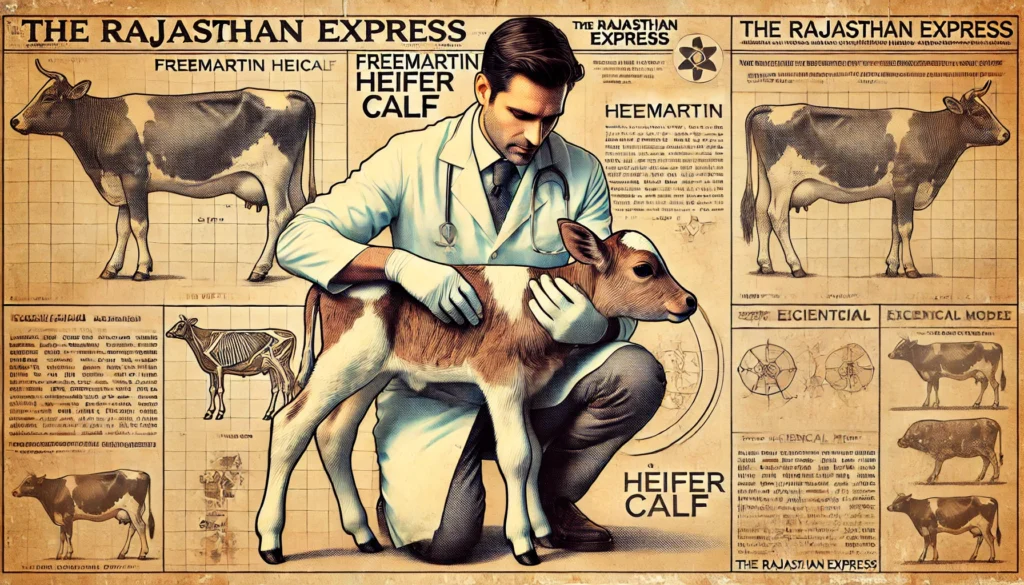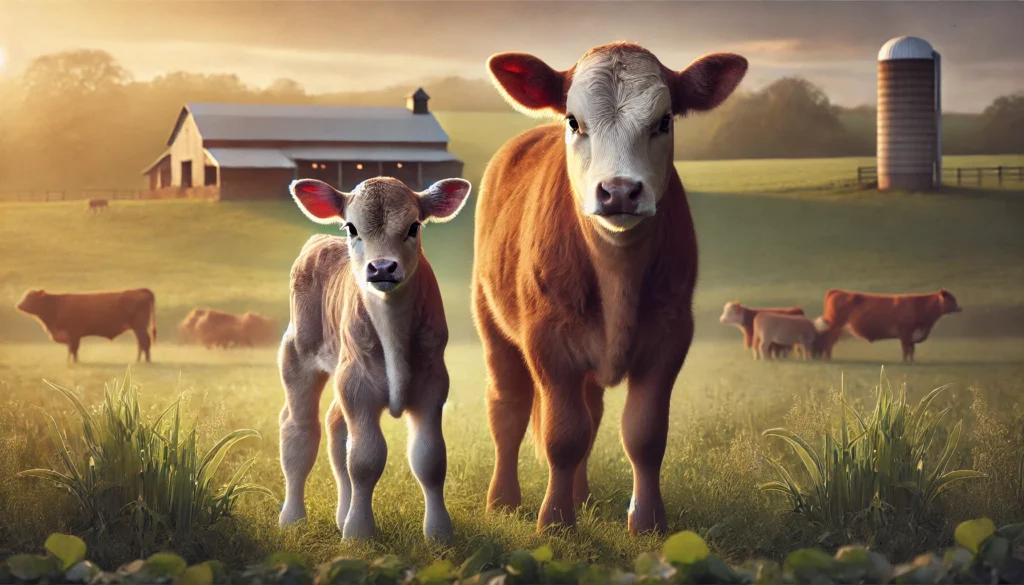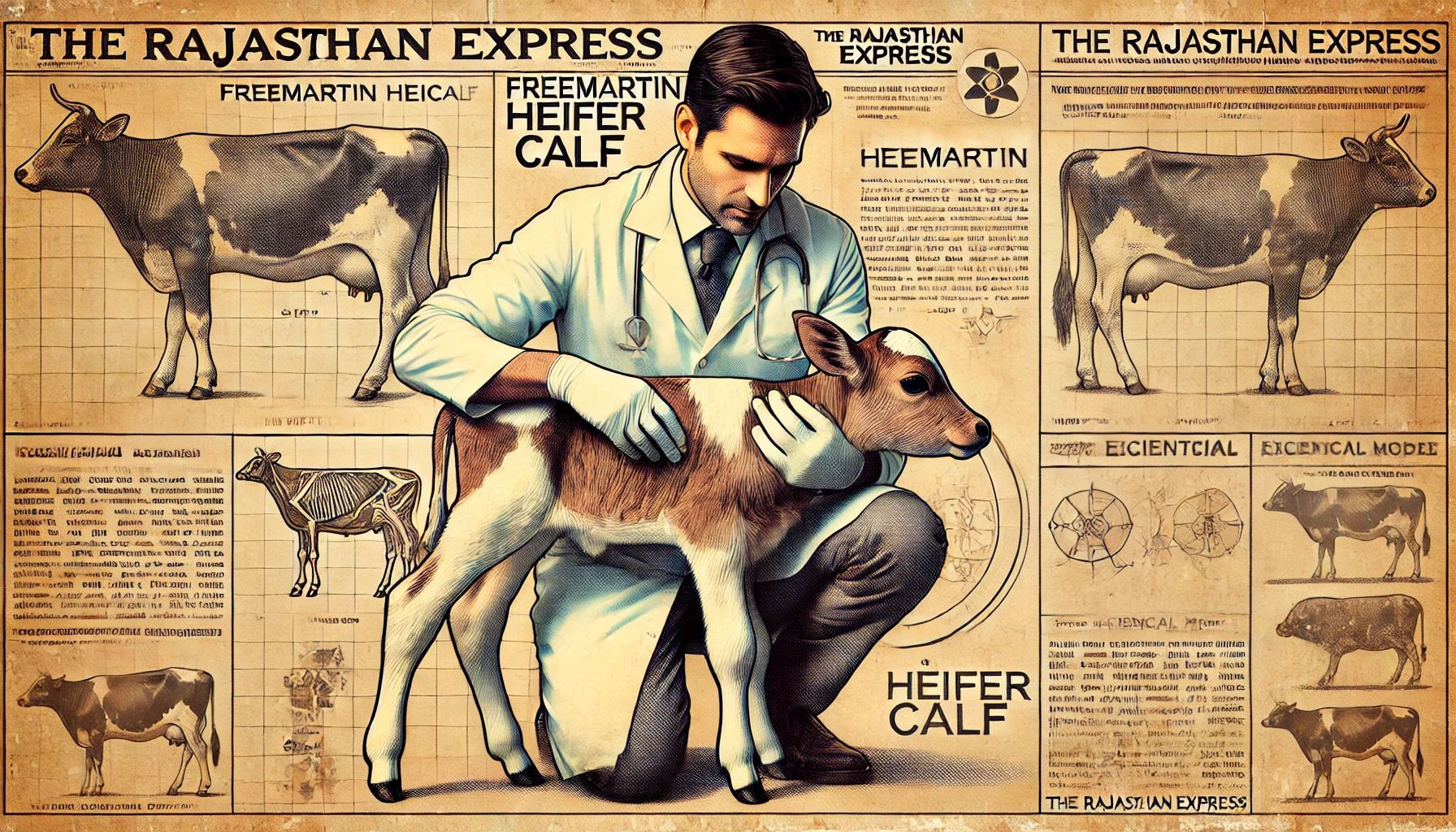Freemartin Definition
Freemartin is a congenital condition that occurs in cattle when a bull calf and a heifer calf are born as twins.
Freemartin Information
| Condition Name | Freemartin |
|---|---|
| What Happens? | When a bull calf and a heifer calf are born as twins, the heifer calf becomes sterile and unable to reproduce. |
| Cause |
|
| Reproductive System |
|
| Outcome | The heifer calf becomes sterile and is unable to reproduce, known as a Freemartin. |
| The Rajasthan Express: Freemartin Condition Overview | |
What Happens?
When a cow gives birth to twin calves—one male and one female—the bull calf develops normally. This means that it will mature into a bull with normal reproductive capacity and the ability to sire offspring. However, the heifer calf becomes sterile, meaning she will not be able to produce offspring in the future. Such a sterile heifer is referred to as a Freemartin. The term “Freemartin” signifies that the heifer is free from reproduction.

What is a free martin in cattle?
When a bull calf and a heifer calf develop as twins in the cow’s uterus, their placentas form a vascular connection. This allows the transfer of hormones from the male fetus to the female fetus, particularly Anti-Müllerian Hormone (AMH) and Testosterone.
- Anti-Müllerian Hormone inhibits the development of the Müllerian duct in the female fetus.
- Testosterone influences the formation of testicular-like cells in the female fetus.
As a result, the heifer calf develops a condition known as ovotestis, where both underdeveloped male and female reproductive organs are present. Consequently, this calf becomes sterile and cannot reproduce. Such a heifer is called a Freemartin.

Additional Information
- The female reproductive system develops from the Müllerian Duct.
- The male reproductive system develops from the Wolffian Duct.
A freemartin cow is a genetically altered female twin to a male, often infertile due to shared hormones. Learn about its causes, traits, and significance in cattle farming.
THE RAJASTHAN EXPRESS


